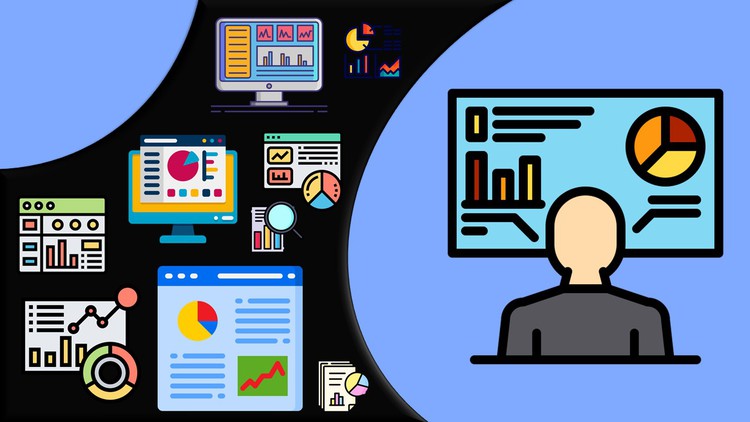
What you will learn
Master Data Analysis Expressions (DAX) and Power Query (M Language) for Power BI Desktop
Learn how to analyze data from multiple sources, create your individual datasets based on these sources and transform your results into interactive reports
Understand Power BI Desktop and its components. Understand the end to end business intelligence workflow
How to Create, Transform and build Relationships between different tables
How to Build and Refine Data Models using Custom Formulas and How to work in the different views of the Data Model
How to create a report with different interactive visualization types
Showcase your skills with two full scale course projects
Description
This course will provide you the skillset you need to create Dynamic Reports and Interactive Dashboards to analyze and interpret meaningful insights from your any data using a Business Intelligence tool like Microsoft Power BI. We have created content with relevance to real world scenarios
From this course, you will learn how to analyze data based on relevance using Power BI.
Power BI is a business analytics and business intelligence service by Microsoft. It aims to provide interactive visualizations and business intelligence capabilities with an interface simple enough for end users to create their own reports and dashboards. Power BI is part of the Microsoft Power Platform.
Power BI is a collection of software services, apps, and connectors that work together to turn your data from different sources into visually immersive and insightful reports.
Using Power BI Desktop, you can create rich, interactive reports with visual analytics at your fingertips for free. It can connect to more than 65 on-premises and cloud data sources to turn information into interactive visuals. Data scientists and developers work with Power BI Desktop to produce reports and make them available to the Power BI service.
In Power BI Desktop, users can:
- Connect to raw data from different sources
- Extract, Profile, Clean, Transform and model the data. Build a Relational Data Model using Power Query and DAX
- Build and optimize data models and DAX measures
- Create charts and graphs using different visualization techniques
- Design and create reports and interactive dashboards to get meaningful insights
- Analyze hidden trends and patterns
- Create and manage datasets
- Share reports with others using the Power BI service within or outside the organization
In this course,
You will learn data analysis and data visualization using Power Query, M Language, Dax and Visualizations in Power BI. You will learn about Power BI Desktop and its components. Learn how to use the Power Query Editor to connect Power BI to various data sources, learn how to work on the Data Models to get meaningful insights.
So what are you waiting for?
Let’s get started.
Content